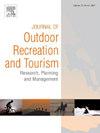Glamping: A review
IF 4.4
3区 管理学
Q1 HOSPITALITY, LEISURE, SPORT & TOURISM
Journal of Outdoor Recreation and Tourism-Research Planning and Management
Pub Date : 2025-02-01
DOI:10.1016/j.jort.2025.100858
引用次数: 0
Abstract
Glamping has been a topic in the academic literature for over 10-years (2013–2024) after first appearing in the legacy news media in 2005. Despite multiple calls to consolidate the academic glamping literature, this is the first known review of peer-reviewed studies. Most authors define glamping with the terms “camping” and “glamorous,” or some form of the latter word (e.g., luxury). The general consensus is that glamping has special features (e.g., amenities, services) that are distinguishable from traditional camping, and demands premium pricing. Not all cultures agree about what entails a glamping accommodating structure, however. Given the wide disparity of glamping definitions and conceptualizations, I globally define glamping as camping with glamorous or luxurious distinctions that are not typical or expected of traditional camping. The study's overarching objectives were to synthesize the glamping literature into core themes, identify research gaps, and prescribe future research directions. Results of the review unveil four themes in the glamping literature, the two most salient glamping attributes and factors influencing planned glamping behaviours. The three research gaps future researchers should address are: (1) inconsistent operationalizations of glamping, (2) inequivalent exploratory methodologies not grounded in theory, and (3) inequivalent attention on glampers, not glamping operator performance. The global definition acknowledges cultural differences in glamping, thus it does not explicitly prescribe an accommodating structure. Future researchers should be sure to describe glamping accommodations within the context of their own culture. Practical and policy implications as well as study limitations are provided.
Management implications
The review uncovered three salient management implications. First are the attributes that glampers find most desirable: nature or outdoors, tangibles (e.g., amenities, décor), services (e.g., dining, housekeeping), recreational accesses (e.g., hiking, yoga), and COVID-19 avoidance. Second is that some travellers prefer space and privacy that emerged as essential glamping characteristics during the COVID-19 pandemic. Third is demographic characteristics of a glamper, including a younger, diverse, and employed audience that usually travels with a partner. Furthermore, three primary managerial topics from a recent glamping industry report are: (1) glamper profiles, (2) glamping structures, and (3) glamping amenities and services.
豪华野营:回顾
自2005年首次出现在传统新闻媒体上以来,豪华野营已经成为学术文献中的一个话题超过10年(2013-2024年)。尽管有很多人呼吁巩固豪华野营学术文献,但这是对同行评议研究的第一份已知评论。大多数作者将glamping定义为“露营”和“迷人”,或者后者的某种形式(例如,奢侈品)。普遍的共识是,豪华野营有与传统露营不同的特殊功能(如设施、服务),因此需要更高的价格。然而,并不是所有的文化都认同豪华野营的住宿结构。考虑到glamping的定义和概念的巨大差异,我在全球范围内将glamping定义为具有迷人或豪华特征的露营,而不是传统露营的典型或期望。该研究的总体目标是将glamping文献整合为核心主题,确定研究空白,并规定未来的研究方向。调查结果揭示了豪华露营文献中的四个主题,两个最突出的豪华露营属性和影响计划的豪华露营行为的因素。未来研究人员应该解决的三个研究缺口是:(1)豪华露营的操作不一致;(2)不基于理论的探索方法不平等;(3)对豪华露营者的关注不平等,而不是豪华露营经营者的表现。全球定义承认豪华野营的文化差异,因此它没有明确规定一个容纳结构。未来的研究人员应该确保在他们自己的文化背景下描述豪华野营住宿。提供了实际和政策意义以及研究的局限性。管理方面的影响审查发现了三个突出的管理方面的影响。首先是glampers最理想的属性:自然或户外,有形的(例如,设施,dsamcor),服务(例如,餐饮,家政),娱乐活动(例如,徒步旅行,瑜伽)和避免COVID-19。其次,一些旅行者更喜欢空间和隐私,这在2019冠状病毒病大流行期间成为露营的基本特征。第三是glamper的人口特征,包括年轻、多样化、有工作的观众,他们通常会和伴侣一起旅行。此外,从最近的一份豪华露营产业报告中,有三个主要的管理主题:(1)豪华露营者简介,(2)豪华露营结构,(3)豪华露营设施和服务。
本文章由计算机程序翻译,如有差异,请以英文原文为准。
求助全文
约1分钟内获得全文
求助全文
来源期刊

Journal of Outdoor Recreation and Tourism-Research Planning and Management
HOSPITALITY, LEISURE, SPORT & TOURISM-
CiteScore
6.70
自引率
5.30%
发文量
84
期刊介绍:
Journal of Outdoor Recreation and Tourism offers a dedicated outlet for research relevant to social sciences and natural resources. The journal publishes peer reviewed original research on all aspects of outdoor recreation planning and management, covering the entire spectrum of settings from wilderness to urban outdoor recreation opportunities. It also focuses on new products and findings in nature based tourism and park management. JORT is an interdisciplinary and transdisciplinary journal, articles may focus on any aspect of theory, method, or concept of outdoor recreation research, planning or management, and interdisciplinary work is especially welcome, and may be of a theoretical and/or a case study nature. Depending on the topic of investigation, articles may be positioned within one academic discipline, or draw from several disciplines in an integrative manner, with overarching relevance to social sciences and natural resources. JORT is international in scope and attracts scholars from all reaches of the world to facilitate the exchange of ideas. As such, the journal enhances understanding of scientific knowledge, empirical results, and practitioners'' needs. Therefore in JORT each article is accompanied by an executive summary, written by the editors or authors, highlighting the planning and management relevant aspects of the article.
 求助内容:
求助内容: 应助结果提醒方式:
应助结果提醒方式:


